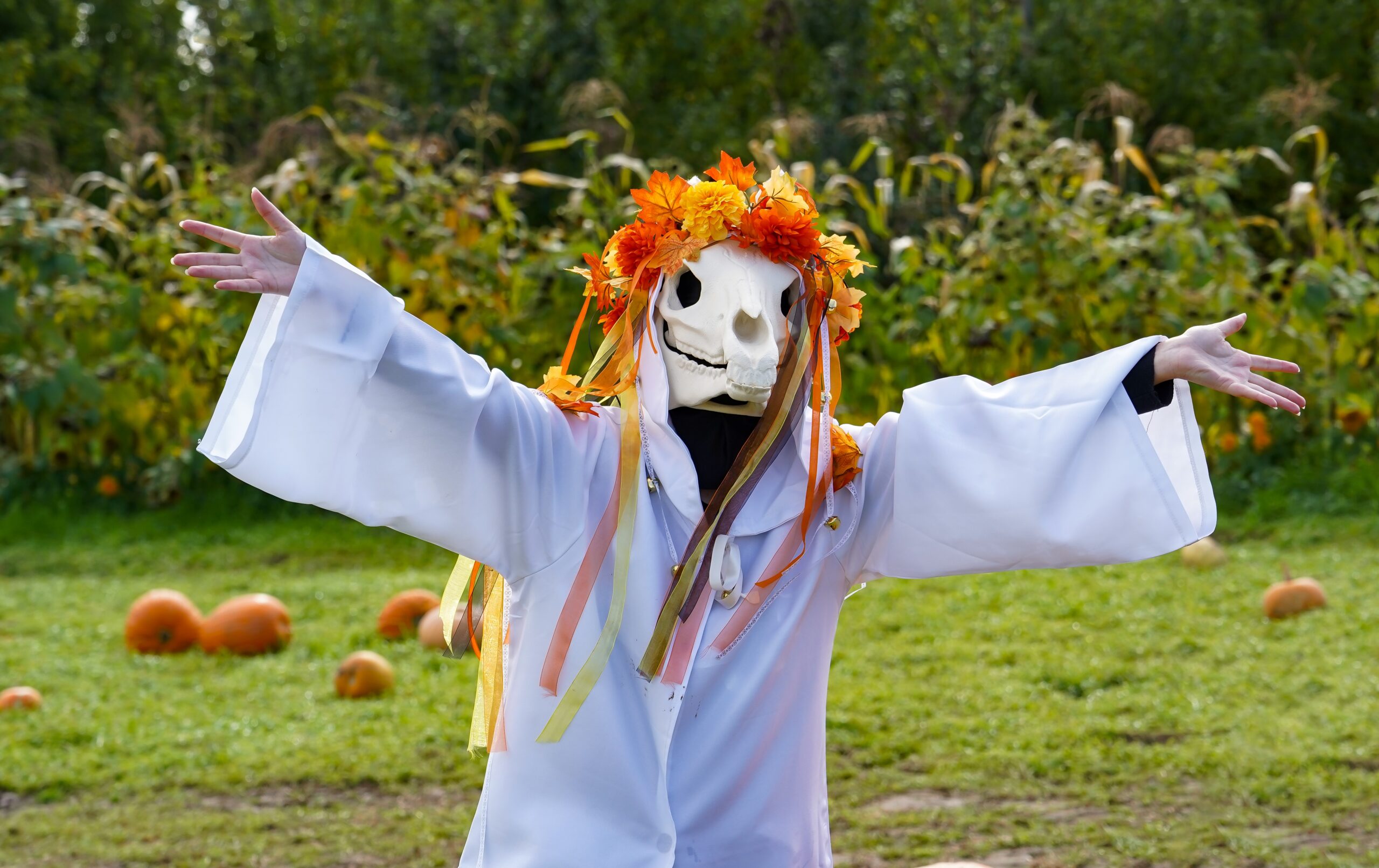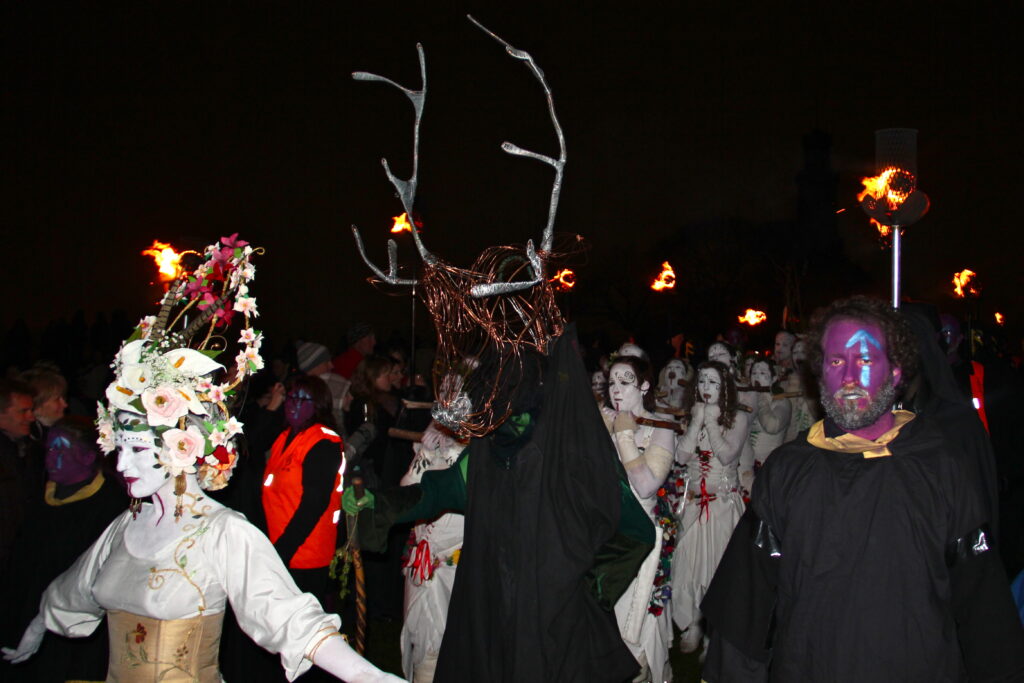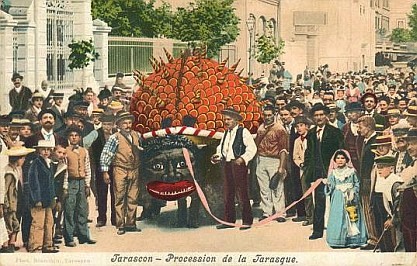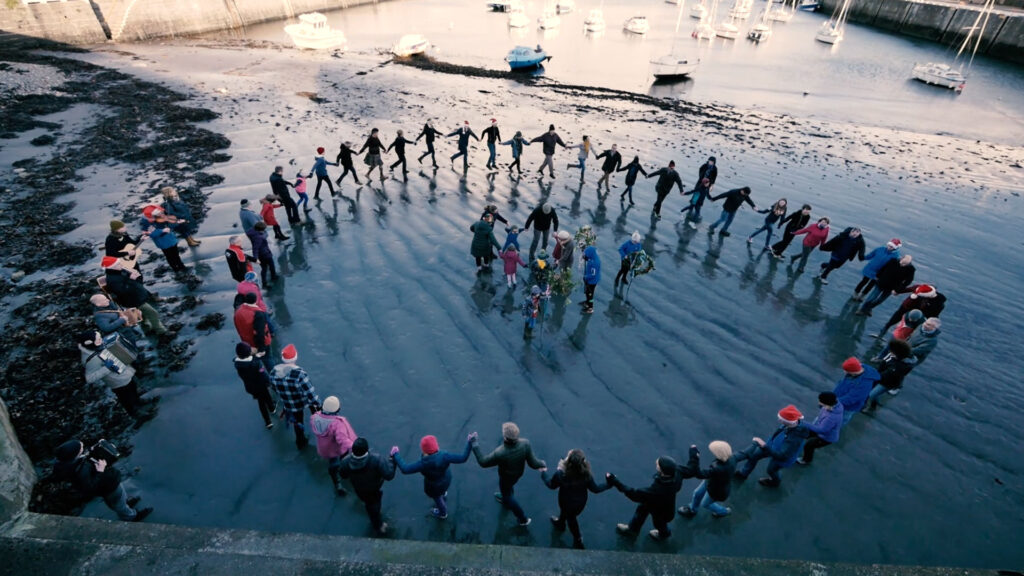While tourists marvel at the Changing of the Guard at Buckingham Palace, in the quieter corners of Britain, ancient traditions rooted in the country’s pagan past are still very much alive. Some are so bizarre, they seem lifted straight from a fantasy novel — yet each is a real part of the local heritage.
Alive and Kicking: Britain’s Pagan Festivals
In Britain, the past doesn’t just live — it dances through fire, gallops through streets, and whispers old incantations. Here, ancient rituals haven’t been locked away in museums — they’re alive in festivals where the pagan and Christian, the mystical and the everyday, blend into a mesmerising spectacle. From the fiery Beltane to the eerie Mari Lwyd, these age-old ceremonies make you wonder what century you’re actually in.
Let’s explore which festivals and traditions have endured through centuries of Christianity, industrialisation, and globalisation — remaining remarkably untouched and vividly alive.
Beltane Fire Festival (Scotland) – Spring’s Fiery Dance
Every year on the night of April 30th, Calton Hill in Edinburgh transforms into a realm of fire and pagan mystery. The Beltane Fire Festival is a modern interpretation of the ancient Celtic celebration of Beltane, marking the arrival of summer and the worship of the sun. In pre-Christian times, druids lit bonfires for people and livestock to pass between or leap over — rituals meant to purify and bring good fortune for the year ahead.
Today, the festival is a spellbinding theatrical ritual featuring semi-nude performers in red and white, gods and mythical beings performing hypnotic dances. At the heart of it all is the awakening of the May Queen and the Green Man — symbols of fertility and the renewal of life. The atmosphere feels as if time itself has paused.
‘Obby ‘Oss Festival (England) – Cornwall’s Creepy Horse
Spring brings its own eerie tradition to the small Cornish town of Padstow. On May 1st, a strange procession takes to the streets: a huge black hobby horse with glowing red eyes dances through the town, both frightening and enchanting the crowd. This is the ‘Obby ‘Oss — an ancient fertility ritual.
The celebration begins on the night of April 30th, when townsfolk gather in the square to sing the “Night Song” before going home. In the morning, dressed for the occasion, they reconvene at the Maypole to sing the “Morning Song.” Two groups lead their own versions of the ‘Obby ‘Oss through the streets, accompanied by drumming and singing. Each hobby horse tries to “catch” young women before it dies at the end of the day — only to be reborn next year. Strange? For locals, it’s just another May Day.
Mari Lwyd (Wales) – Winter’s Ghostly Mare
Cornwall isn’t the only place with a creepy horse tradition. Picture this: a dark winter evening, and suddenly someone knocks at your door… it’s a horse skull draped in white cloth, decked out in ribbons and glitter, its hollow eyes and gaping jaw staring back at you. This is Mari Lwyd, a tradition still practiced in parts of rural Wales.
Dating back to pre-Christian times, the ritual involves a group carrying the horse skull on a pole from house to house. They sing in verse, demanding entry, while the residents must refuse — also in verse. If the homeowners falter and the Mari Lwyd team wins the lyrical battle, they are let inside and offered food and drink.
The spooky tradition may be tied to winter solstice celebrations and the belief in the horse as a spirit guide between worlds. Some scholars believe it commemorates Mary and Joseph’s flight from King Herod — interpreting the ghostly mare as a tribute to the donkey that carried the Virgin Mary.
Hunting the Wren (Isle of Man, Ireland) – The King of Birds
On the frosty morning of December 26th, as waves crash on the shore, groups dressed in bright costumes comb the streets with sticks, hunting… a wren. This curious ritual, preserved on the Isle of Man and in parts of Ireland, centres around the symbolic reverence (and at times persecution) of this small, humble bird.
Historically, young men would hunt and kill a real wren — the “king of birds” — on St. Stephen’s Day, parade it through the village with ritual songs, and either bury it or nail it to a church door. Though the practice sounds brutal, over time the real bird was replaced by a symbolic effigy carried on a pole.
Its origins likely lie in Celtic beliefs tied to nature spirits or seasonal change. One legend claims that a beautiful, dangerous fairy once lived on the Isle of Man. Enchanting and destructive, she was eventually turned into a wren, doomed to be hunted forever.
Mummers’ Play (Northern Ireland, England and beyond) – Masks and Living Legends
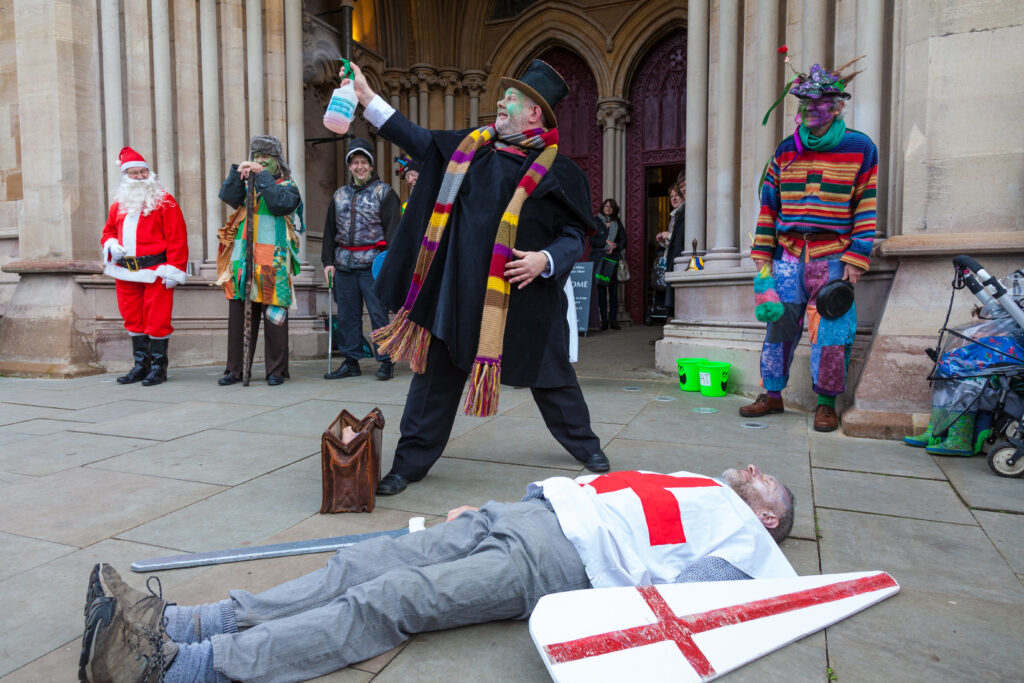
Mummers’ Plays are mysterious theatrical performances put on during the winter holidays — especially at Christmas and New Year. Masked and costumed performers act out tales drawn from old myths, often involving battles between life and death, the triumph of good over evil, and the resurrection of fallen heroes.
Though their current form emerged from medieval mystery plays, the roots of Mummers’ Plays likely go back even further — to ancient Celtic or Germanic rituals. Some scholars link them to Druidic beliefs in the cyclical nature of life. They were wildly popular in medieval Britain — even a young Henry VIII reportedly took part — and spread with settlers to far-flung places like the U.S., Newfoundland, and Saint Kitts and Nevis.
What’s remarkable is that these plays are still performed today across Britain, including Northern Ireland, England, and the Isle of Man. They feature beloved folk characters like Saint George, Robin Hood, Father Christmas, dragons, and Beelzebub.
In our modern world, it’s hard to believe ancient rituals could survive in such raw, unchanged forms. Yet Britain is a land where past and present live side by side, intertwining in unexpected and often magical ways. So next time you’re planning a trip to the British Isles, consider dropping in on one of these festivals. At best, you’ll feel the presence of something ancient and powerful. At the very least — you’ll get to see a man in a dead horse mask chasing people through the streets to the beat of a drum.

